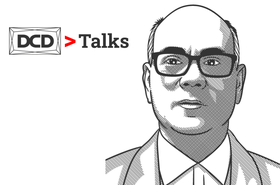Our world hums with unseen energy, surging through a complex network of critical infrastructure. Power grids, communication lines, and other utilities, increasingly supported by AI-powered systems, form the invisible backbone that keeps our digital society alive and fluid.
Yet, in this ever-connected world, a crucial question emerges: How do we strike the perfect balance between technological advancement and environmental stewardship to accommodate predicted compute growth and ensure that our progress does not come at a significant societal cost?
The answer lies in a multi-pronged approach – embracing innovative solutions and integrating next-generation nuclear, renewable, and alternative energy sources, along with the smart grid envisioned years ago, powered by AI. These elements are crucial for achieving a harmonious future where technology and sustainability seamlessly coexist. This balance must be maintained while ensuring our existing energy resources remain reliable, resilient, and capable of quickly recovering after incidents such as weather-related events.
Traditional fossil fuel methods have boosted our digital growth, but their environmental impact has been a heavy burden on the planet over the past few decades. To address this, we must start by improving our power grid and continue to invest in next-generation energy systems.
Concurrently, we should strive to improve the current 33 percent grid-to-chip efficiency by minimizing transmission, distribution, and internal building losses, which can be achieved with IoT and AI at minimal cost.
We should also continue upgrading existing technology with smart meters at various levels, from generation to distribution, and integrating them with a common operating environment, enhanced with AI.
This optimization lays the foundation for integrating a diverse range of smart, clean energy sources. In essence, we aim to create pure power for our larger base loads, such as data centers and critical infrastructure, through next-generation energy while using existing fossil fuels for non-critical, smaller base loads.
The Nuclear Renaissance arrives at a critical time, providing a stable and reliable baseload for data centers as their demand surges from 50MW to 500MW. Modern nuclear reactors, particularly small modular reactors (SMRs), offer a clean, reliable, and efficient power source with minimal land-use requirements, supplying energy where it is most needed. These standardized reactors boast shorter construction times and lower costs, making them a compelling solution for large-scale energy needs, despite a still lengthy permit process that is expected to improve. Additionally, advancements in nuclear fuel recycling significantly reduce waste concerns.
Nuclear power is stable and resilient, making it an excellent foundation for a reliable energy grid. Unlike renewables such as solar and wind, which depend on weather conditions, nuclear reactors run 24/7, unaffected by fluctuations in sunshine or wind speed. This steady consistency is crucial as we integrate renewables into the next-generation grid. Modern reactors incorporate robust safety features with multiple layers of redundancy, and their modular design simplifies maintenance and repairs, minimizing downtime.
The digital revolution itself can act as a conductor, perfecting and integrating nuclear power with other clean energy sources. Smart grids, using advanced sensors and automation, can dynamically adjust power distribution, seamlessly blending nuclear energy with renewable sources like solar and wind farms strategically placed based on geographic advantages.
Hydropower plants can contribute baseload power in regions with strong rivers or significant elevation changes, while fuel cells can be utilized in areas with abundant methane. Geothermal energy, using the Earth's internal heat, offers another dependable source, particularly in volcanic regions. Artificial intelligence can analyze energy usage patterns and predict demand surges, enabling efficient resource allocation. The Internet of Things (IoT) will connect data centers and businesses, allowing them to leverage a stable nuclear baseload to further optimize energy consumption.
Building a society that thrives in harmony with its digital dependence requires not just technological innovation but also a cultural shift. Education initiatives can empower individuals to understand the benefits of a diverse clean energy portfolio. Fostering public trust in nuclear power’s safety features and waste management capabilities is crucial.
Policies that incentivize clean energy adoption, carbon emission reduction and capture, and grid modernization will be critical. Additionally, fostering international collaboration in research and development can accelerate the deployment of advanced nuclear and other clean energy technologies, creating a truly global clean energy future.
Nuclear power fills the gap between tech giants and their critical Infrastructure. SMRs are uniquely positioned to meet the demanding and often isolated power needs of data centers operated by companies like Google, Microsoft, and Amazon. Their modular design allows for easy transport and deployment in remote locations, ideal for off-grid data centers seeking reliable and clean energy sources. This collaboration between tech giants and the nuclear industry paves the way for a sustainable and resilient digital infrastructure.
By harnessing the power of advanced nuclear technology, orchestrated by AI within a digital ecosystem that seamlessly integrates a variety of clean energy sources, we can create a future where our technological reliance coexists harmoniously with a sustainable planet.
Remarkably, just a decade ago, data centers operated on a modest 30-50MW, while today, they scale to 300-500MW and beyond. This progression exemplifies the nuclear orchestration of a thriving digital age, blending innovation and sustainability into a cohesive and powerful force for a brighter, more sustainable future.
More from PMC
-

DCD>Talks quantum computing synergy with Peter Curtis | PMC Group I
Peter Curtis joins us at DCD>Connect | New York 2024, to discuss how AI will change when Quantum Computing propels our industry forward
-

Sponsored The digital tapestry: Safeguarding our future in a hyper-connected world
Building a responsible digital ecosystem
-

Sponsored Embracing the future: The evolutionary shift in data center operations through AI
At the core of maintaining seamless data center operations is the practice of predictive maintenance

